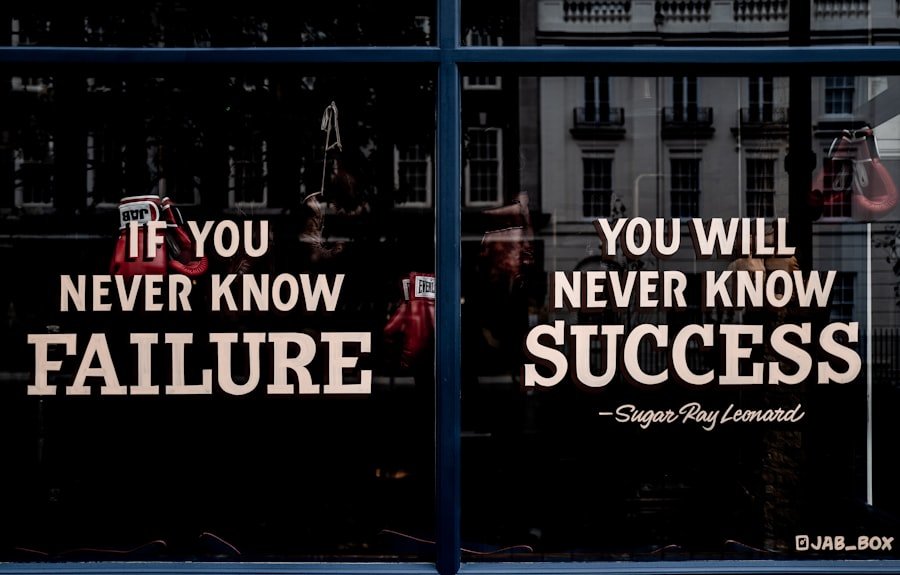Now Reading: The Rise of Asymmetrical Multiplayer: A Thriving Evolution
-
01
The Rise of Asymmetrical Multiplayer: A Thriving Evolution
The Rise of Asymmetrical Multiplayer: A Thriving Evolution

Asymmetrical multiplayer games have a rich history that can be traced back to the early days of gaming. While traditional multiplayer games often pit players against each other on equal footing, asymmetrical multiplayer introduces a unique dynamic where players assume different roles with varying abilities and objectives. This concept can be seen in classic games like “Hide and Seek,” where one player takes on the role of the seeker while others hide, creating an inherent imbalance that adds excitement and unpredictability to the gameplay.
The roots of asymmetrical multiplayer can also be found in tabletop games, where players often take on distinct roles, each with their own strengths and weaknesses. As technology advanced, so did the potential for asymmetrical multiplayer experiences. The advent of online gaming in the late 1990s and early 2000s opened new avenues for developers to explore this concept.
Games like “Left 4 Dead” introduced players to cooperative gameplay where survivors faced off against a horde of zombies, each side possessing unique abilities and strategies. This marked a significant shift in how multiplayer games were designed, allowing for more complex interactions and strategies that could only be achieved through asymmetry. As I reflect on these origins, I realize how they laid the groundwork for the diverse range of asymmetrical multiplayer games we see today.
Key Takeaways
- Asymmetrical multiplayer games have their origins in traditional board games and early video games, where players took on different roles and had unique abilities.
- The appeal of asymmetrical multiplayer games lies in the excitement of playing as a unique character with distinct abilities, creating a sense of unpredictability and challenge.
- Asymmetrical multiplayer games have evolved with advancements in technology, allowing for more complex and immersive gameplay experiences.
- Technology has played a significant role in the rise of asymmetrical multiplayer games, enabling developers to create more diverse and engaging gameplay mechanics.
- Popular asymmetrical multiplayer games like Dead by Daylight, Among Us, and Friday the 13th have had a significant impact on the gaming industry, inspiring new game designs and experiences.
The Appeal of Asymmetrical Multiplayer Games
The appeal of asymmetrical multiplayer games lies in their ability to create tension and excitement through unequal power dynamics. As a player, I find that the thrill of being part of a team with distinct roles adds layers of strategy and depth to the experience. Each match feels unique, as players must adapt their tactics based on the strengths and weaknesses of their characters.
This unpredictability keeps me engaged, as I never quite know what to expect from my opponents or teammates. The asymmetry fosters a sense of collaboration, as players must communicate and strategize to overcome challenges that would be insurmountable alone. Moreover, asymmetrical multiplayer games often evoke a sense of immersion that is hard to replicate in traditional formats.
When I step into the shoes of a powerful monster or a cunning survivor, I feel a connection to my character that enhances my overall gaming experience. The emotional stakes are heightened when I know that my actions can significantly impact the outcome of the game. This emotional investment is a key factor in why I—and many others—are drawn to these types of games.
The blend of competition and cooperation creates a rich tapestry of interactions that keeps me coming back for more.
How Asymmetrical Multiplayer Games Have Evolved

Over the years, asymmetrical multiplayer games have undergone significant evolution, both in terms of gameplay mechanics and narrative depth. Initially, many games focused primarily on the mechanics of asymmetry, emphasizing unique abilities and roles without delving deeply into character development or storylines. However, as the genre gained popularity, developers began to recognize the importance of narrative in enhancing player engagement.
Games like “Dead by Daylight” not only introduced varied gameplay mechanics but also crafted intricate backstories for their characters, enriching the overall experience. The evolution of game design has also led to more sophisticated matchmaking systems that enhance the asymmetrical experience. In earlier iterations, players often faced challenges related to balancing teams with unequal numbers or skill levels.
Today, advanced algorithms help ensure that matches are more evenly matched, allowing for fairer competition and reducing frustration. As I’ve played these games over time, I’ve noticed how these improvements have made each session feel more rewarding and enjoyable, as I can focus on strategy rather than worrying about imbalances.
The Role of Technology in the Rise of Asymmetrical Multiplayer
Technology has played a pivotal role in the rise of asymmetrical multiplayer gaming. The development of high-speed internet connections has made it possible for players around the world to connect seamlessly, allowing for real-time interactions that are crucial for these types of games. Additionally, advancements in graphics and processing power have enabled developers to create more immersive environments and complex character designs that enhance the overall experience.
As I navigate through these virtual worlds, I am constantly amazed by how far technology has come in bringing these games to life. Furthermore, the rise of streaming platforms and social media has contributed significantly to the popularity of asymmetrical multiplayer games. As I watch my favorite streamers play titles like “Phasmophobia” or “Evolve,” I am drawn into their experiences and strategies.
This visibility not only promotes community engagement but also inspires new players to join in on the fun. The ability to share gameplay moments instantly has created a culture around these games that fosters camaraderie and competition alike, making them more appealing than ever.
Popular Asymmetrical Multiplayer Games
Several popular asymmetrical multiplayer games have captured my attention over the years, each offering unique experiences that highlight the genre’s versatility. One standout title is “Dead by Daylight,” where one player takes on the role of a killer while others attempt to escape as survivors. The tension created by this dynamic is palpable; every decision feels critical as survivors work together to outsmart their pursuer while trying to stay alive.
The game’s success can be attributed not only to its engaging mechanics but also to its diverse cast of characters and rich lore. Another notable example is “Among Us,” which took the gaming world by storm with its simple yet effective premise. In this game, players work together on a spaceship while trying to identify impostors among them.
The social deduction aspect adds an entirely new layer to gameplay, as trust becomes a valuable commodity. I find myself constantly analyzing my fellow players’ behaviors, leading to intense discussions and debates about who might be sabotaging our mission. These experiences highlight how asymmetrical multiplayer games can foster unique social interactions that are both entertaining and thought-provoking.
The Impact of Asymmetrical Multiplayer on the Gaming Industry

The rise of asymmetrical multiplayer games has had a profound impact on the gaming industry as a whole. Developers have begun to recognize the potential for creating innovative gameplay experiences that break away from traditional formats. This shift has led to an influx of new titles exploring asymmetry in various ways, pushing boundaries and challenging conventions within the industry.
As I observe this trend, it’s clear that asymmetrical multiplayer has opened doors for creativity and experimentation that were previously unexplored. Moreover, the success of these games has influenced marketing strategies within the industry. Asymmetrical multiplayer titles often thrive on community engagement and word-of-mouth promotion, leading developers to invest more in building strong online communities around their games.
This focus on player interaction has resulted in a shift toward live-service models, where ongoing updates and events keep players engaged long after a game’s initial release. As someone who enjoys being part of these communities, I appreciate how this approach fosters a sense of belonging among players while ensuring that games remain fresh and exciting.
The Future of Asymmetrical Multiplayer Gaming
Looking ahead, I believe that the future of asymmetrical multiplayer gaming holds immense potential for further innovation and growth. As technology continues to advance, we can expect even more immersive experiences that blur the lines between reality and virtuality. Virtual reality (VR) and augmented reality (AR) technologies are already beginning to make their mark on gaming, and I envision a future where asymmetrical multiplayer experiences become even more engaging through these mediums.
Additionally, as developers continue to explore new narratives and character dynamics within asymmetrical frameworks, we may see an expansion into genres beyond horror or survival themes. Imagine an asymmetrical multiplayer game set in a fantasy world where one player embodies an all-powerful sorcerer while others take on roles as adventurers seeking to thwart their plans. The possibilities are endless, and as I think about what lies ahead, I feel excited about the creative directions this genre could take.
The Psychological and Emotional Impact of Asymmetrical Multiplayer
The psychological and emotional impact of asymmetrical multiplayer games is another fascinating aspect worth exploring. Engaging in these types of games often elicits strong emotional responses from players due to their inherent tension and unpredictability. For instance, when I play as a survivor in “Dead by Daylight,” I experience adrenaline rushes as I evade the killer while strategizing with my teammates.
This heightened emotional state can lead to memorable moments that linger long after the game ends. Moreover, asymmetrical multiplayer games can serve as a form of escapism for many players, allowing them to immerse themselves in different roles and scenarios that may be far removed from their everyday lives. This ability to step into another character’s shoes can provide valuable insights into different perspectives and foster empathy among players.
As I navigate these virtual worlds, I often find myself reflecting on my own behavior and decision-making processes, which can lead to personal growth beyond just gaming.
The Social Aspect of Asymmetrical Multiplayer Gaming
The social aspect of asymmetrical multiplayer gaming cannot be overstated; it plays a crucial role in shaping player experiences and fostering connections among individuals from diverse backgrounds. When I engage in these games with friends or even strangers online, I am often struck by how quickly we form bonds through shared challenges and victories. The collaborative nature of these games encourages communication and teamwork, creating an environment where players must rely on one another to succeed.
Additionally, many asymmetrical multiplayer games feature built-in voice chat or text communication systems that facilitate interaction between players during matches. This connectivity allows for real-time strategizing and enhances the overall experience by fostering camaraderie among teammates. As I reflect on my own experiences playing with others online, I realize how these interactions have led to lasting friendships that extend beyond just gaming sessions.
The Competitive Nature of Asymmetrical Multiplayer Games
The competitive nature inherent in asymmetrical multiplayer games adds another layer of excitement that keeps me engaged as a player. Whether I’m trying to outsmart an opponent or working collaboratively with teammates toward a common goal, there’s an undeniable thrill that comes from competing against others with different abilities and strategies. This dynamic creates an environment where every match feels fresh and unpredictable; no two games are ever quite alike.
Moreover, many asymmetrical multiplayer titles incorporate ranking systems or competitive modes that allow players to showcase their skills against others at similar levels. This aspect appeals to my desire for achievement and recognition within the gaming community; climbing ranks or earning accolades provides a sense of accomplishment that motivates me to improve my gameplay further. As I delve deeper into these competitive environments, I find myself constantly striving for mastery while enjoying every moment spent battling it out with fellow gamers.
The Challenges and Opportunities in Asymmetrical Multiplayer Game Design
Designing asymmetrical multiplayer games presents both challenges and opportunities for developers looking to create engaging experiences for players like myself. One significant challenge lies in balancing gameplay mechanics so that no single role becomes overwhelmingly powerful or underwhelming compared to others. Achieving this balance requires extensive playtesting and feedback from diverse player groups—a process that can be time-consuming but ultimately leads to more satisfying gameplay experiences.
On the flip side, these challenges also present opportunities for innovation within game design itself. Developers have the chance to experiment with unique mechanics that leverage asymmetry creatively while still providing engaging experiences for all players involved. For instance, introducing new roles or abilities can keep gameplay fresh while encouraging collaboration among teammates as they adapt their strategies accordingly.
In conclusion, as I reflect on my journey through the world of asymmetrical multiplayer gaming—from its origins to its current state—I am filled with excitement about what lies ahead for this dynamic genre. With advancements in technology paving the way for even more immersive experiences combined with an ever-growing community passionate about these types of games, it’s clear that asymmetrical multiplayer will continue shaping not only individual player experiences but also broader trends within the gaming industry itself.
Asymmetrical multiplayer games have been gaining popularity in recent years, offering unique and engaging experiences for players. One related article that explores the world of gaming deals is “Score Big with Black Friday Gaming Deals”. This article discusses how gamers can take advantage of discounts and promotions to enhance their gaming experience. By finding great deals on popular asymmetrical multiplayer games, players can further immerse themselves in this exciting genre.



























